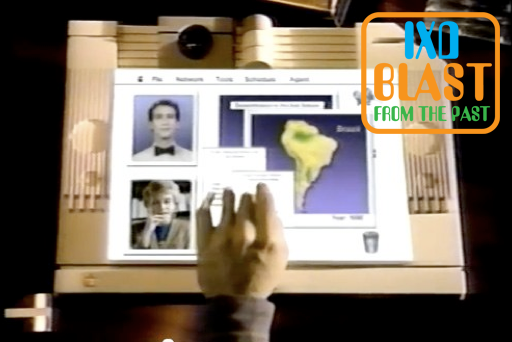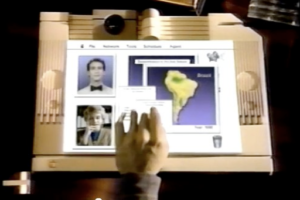This was more than the typical industrial film made by a corporation to communicate a vision of the future. It was a remarkably cogent vision that has largely held up over the last 37 years!
Knowledge Navigator was the first of a set of promotional films created by Apple Computer to highlight current and coming technologies and Apple’s humanistic vision for computing. It was created for a presentation by then CEO John Scully by a team that includes two colleagues of mine: Doris Mitsch and Hugh Dubberly (the latter who I teach with).
The scenario centered around a professor preparing for a looming class lecture and using a variety of technologies to prepare: a personified artificial conversational agent, video technology, collaborative document creation, “AI”-like calendaring, networked access to data, etc.—all in a portable laptop! The whole is much more than the sum of its parts and the believable story is a relevant example of how these technologies can benefit people in a humanistic way.
Knowledge Navigator was the latest in a long history of “ephemeral films” made by corporations to promote their visions of the future, of industries, and themselves but the technology industry hadn’t made something similar in, at least, a generation. When it “hit,” the technology world was surprised and impressed. In addition, due to its success, several other companies (notable, Microsoft and Sun Microsystems) eventually made similar vision videos, often with laughably overdramatic and uncredible stories or overly emphasis on technology (instead of people). A notable exception were the short, impactful “You Will” vision advertisements from AT&T.
Knowledge Navigator made such a big impact because the use of these advanced technologies were framed in a human, accessible interface. Phil (the conversational agent), for example, wasn’t obnoxious or intrusive (like Microsoft’s Clippy would become a decade later), was interruptable, and was able to glean context quickly and effortlessly (which is, admittedly, much easier said than done, even today). Still, the vision is clear and compelling all these decades later. It’s worth a watch, both for the interface ideas and their prescience, and for an example of quality tech storytelling.
Watch the video


Recent Comments